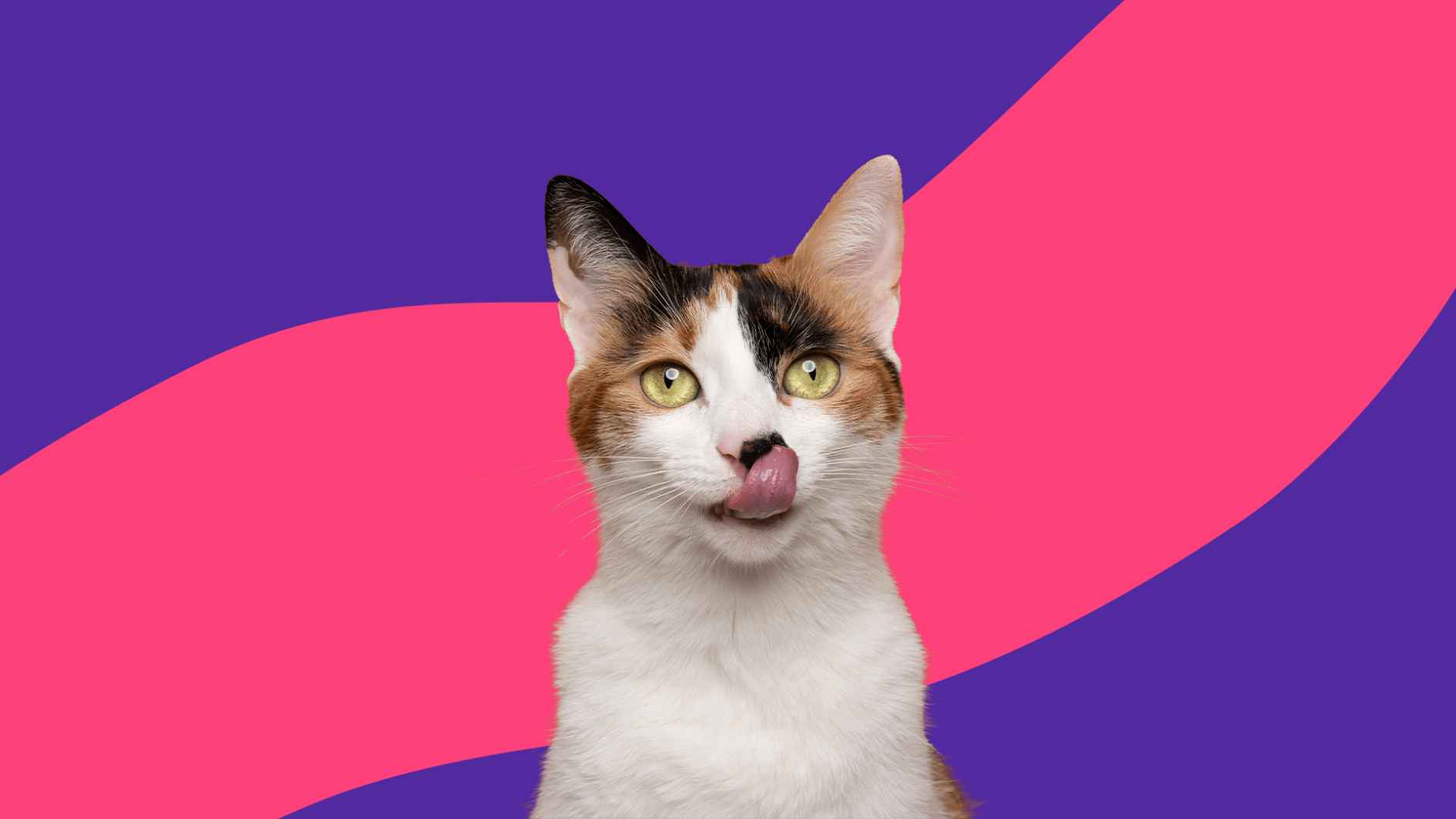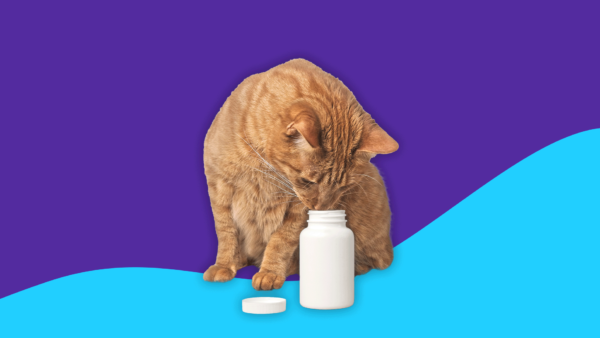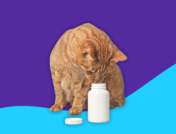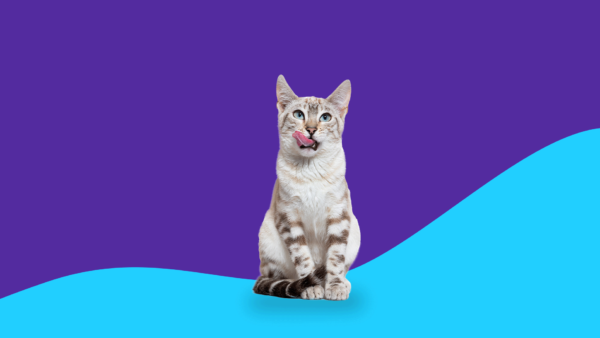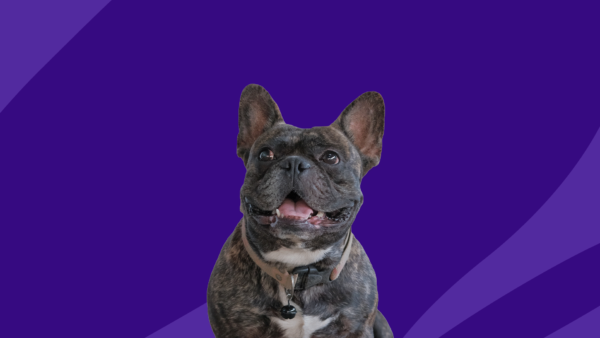Key takeaways
Fluoxetine is used to treat behavior issues in cats, including anxiety.
The standard fluoxetine dosage for cats is given once daily.
The most common side effects of fluoxetine in cats are sleepiness and loss of appetite.
Do not give fluoxetine to cats who are allergic to fluoxetine.
Fluoxetine is a well-known antidepressant commonly used in cats to treat behavior issues such as anxiety, aggression, obsessive-compulsive behavior, and spraying. Veterinarians may also use fluoxetine to treat itchy skin in cats when other drugs don’t help, but that use is less common. Better known by the brand name Prozac, fluoxetine belongs to a group of antidepressants called selective serotonin reuptake inhibitors or SSRIs. These drugs work by increasing the serotonin levels in the body, which aids in decreasing anxiety and impulsiveness. Fluoxetine is approved by the U.S. Food and Drug Administration (FDA)for use in dogs—the canine version is called Reconcile—but its use in cats is off-label.
RELATED: Save up to 80% on fluoxetine
What is fluoxetine used for in cats?
Veterinarians use fluoxetine to treat behavior issues in cats, including anxiety, spraying, and aggression. One study found that the most common reason veterinarians use fluoxetine in cats is for urinary marking and undesired elimination behaviors. Sometimes, a veterinarian may turn to fluoxetine to treat other conditions, such as itchy skin.
Anxiety
Cats display anxiety through unusual or impulsive behaviors like running away, hiding, or making noise. The most common type of anxiety in cats is separation anxiety. Drugs are not always the first or best choice for feline anxiety. Typically, veterinarians will ask pet owners to change the way they act toward the cat, modify the cat’s environment, and work to train the cat with reinforcement training techniques. Antidepressants like fluoxetine can support this process when behaviors are particularly stubborn or extreme.
Spraying (urine marking)
Most cats that have not been neutered or spayed regularly mark surfaces with urine, including walls, drapes, sofas, and other objects. Even spayed and neutered cats do it, but it’s less likely. Urine marking is a common reason people give up their cats to shelters. Like anxiety, urine spraying is best treated with behavior modification and environmental changes. Adding fluoxetine or another antidepressant to reduce a cat’s anxiety can help behavioral and environmental treatments succeed.
Aggression
Aggression is a common problem in dogs, but cats sometimes behave aggressively toward cats, people, or pets. 27% of cats brought to shelters for behavior problems are being given up for aggressive behaviors. Behavior modification and environmental changes are the first-line treatments. There are many reasons for a cat’s aggressive behavior, so many possible interventions exist. Drugs like fluoxetine can help with some of the more hazardous or stubborn aggressive behaviors when other natural treatments don’t solve the problem.
Other veterinary conditions
Veterinarians can prescribe human drugs like fluoxetine when they believe they might help. Some veterinarians may use fluoxetine in a cat to treat obsessive-compulsive disorders, excessive grooming, itchy skin, bladder inflammation, and abnormal behaviors like hyperactivity or inappropriate urination.
RELATED: Can I save on medication for my pets?
Is fluoxetine safe for cats?
The use of fluoxetine in cats has not been researched. Still, veterinarians commonly use it with other treatments because of its effectiveness and safety. However, some cats may have problems with fluoxetine because of pre-existing conditions.
Fluoxetine should never be given to cats with a hypersensitivity reaction to fluoxetine.
Dogs with seizure disorders are never given fluoxetine, so a veterinarian may be reluctant to use it in a cat with seizure disorders.
Other cautions include diabetes mellitus and liver disease.
Side effects of fluoxetine in cats
The most common side effects of fluoxetine in cats are:
- Sedation
- Loss of appetite
- Behavior changes
- Gastrointestinal issues
The most serious side effects of fluoxetine are:
- Serious behavior changes like aggression or anxiety
- Insomnia
- Seizures
Aggression is an unacceptable side effect. Talk to a veterinarian if the cat becomes aggressive, fearful, or anxious while taking fluoxetine. Seizures are more serious. If your cat has a seizure, take the cat to a veterinary clinic or animal hospital.
Interactions of fluoxetine with other pet meds
Before starting your cat on fluoxetine, tell the veterinarian about all the prescription drugs, over-the-counter medications, dietary supplements, and herbal remedies the cat takes.
Fluoxetine can never be taken with drugs called monoamine oxidase inhibitors (MAOIs) as it may lead to serotonin syndrome. These drugs must be stopped at least 14 days before the cat can safely take fluoxetine. The most common MAO inhibitor used in cats in dogs and cats is selegiline, a drug that treats cognitive decline in animals. Another possible MAO inhibitor is the antibiotic linezolid, but it’s rarely used in cats. The most important MAO inhibitor to know about is the topical flea medication Amitraz. Flea and tick collars sold on pet store shelves sometimes contain amitraz and can cause serious adverse effects in cats taking fluoxetine.
Fluoxetine isn’t always safe to take with other medications, but the combination is not prohibited. The vet may need to monitor for potential side effects of these drug interactions. Drugs that may cause interactions when taken alongside fluoxetine include:
- Tricyclic antidepressants like amitriptyline or clomipramine
- Drugs that make the cat urinate (diuretics)
- Insulin
- The sedatives diazepam, alprazolam, or trazodone
- The anxiety drug buspirone
- The antihistamine cyproheptadine
- The seizure medication phenytoin
- The pain medications tramadol or pentazocine
- The blood pressure and heart medications propranolol and metoprolol
- The blood thinner warfarin
Drugs like CBD that make the cat sleepy or lethargic could worsen the sedative effects of fluoxetine.
Fluoxetine dosage for cats
The standard fluoxetine dosage for cats is 0.5–1.5 mg/kg, given once daily.
Other published dosages include:
- For aggression or anxiety: 0.5–1.5 mg/kg given once daily
- For urine marking: 0.5–1.5 mg/kg OR 2.5–5 mg given once per day
- For itchy skin (pruritus): 1–5 mg given once per day
Can cats overdose on fluoxetine?
Cats can overdose on fluoxetine, but veterinarians have effective treatments for fluoxetine overdose. If too much fluoxetine is given to a cat, the overdose could cause seizures. Cats that have overdosed on fluoxetine may show signs such as vomiting, drooling, dilated pupils, and making more noise than usual. If there’s any suspicion that too much fluoxetine has been given to a cat, call a veterinarian or animal poison control center for advice. Always take a cat having seizures to a veterinarian or veterinary hospital.
Veterinarians have not established a maximum fluoxetine dosage for cats. The highest recommended dose is 1.5 mg per kilogram of body weight (about 0.7 mg/lb) daily. Never exceed the veterinarian’s prescribed dosage to ensure the cat’s safety.
Can I give my cat fluoxetine every day?
Fluoxetine is a long-term daily treatment. It typically takes several weeks before pet parents notice significant changes in their cat’s behavior. Although no clinical studies vouch for its safety as a long-term treatment in cats, it’s typically used for months or years in humans.
How to give your cat fluoxetine
Fluoxetine is usually given once per day to a cat. Some vets may prescribe twice daily doses.
There are no fluoxetine formulations specific to cats so, veterinarians will send people home with human versions of the drug (tablets, capsules, or oral solution), the canine version of the drug (chewable tablets), or fluoxetine custom-prepared by a compounding pharmacy.
- Follow all the veterinarian’s instructions.
- Do not change the dose or dosing schedule. Some vets may ask that doses be given at any time of the day, some may specify morning doses, and some may tell pet parents to provide the dose at night.
- Fluoxetine can be given with or without food. If the cat vomits or gets sick after a dose, try giving the dose with food.
- If you don’t know how to give tablets to a cat, ask a veterinary technician or other veterinary professional to demonstrate the proper technique. You can also get a pill plunger for easier dosing, but have a veterinary professional show you the correct way to use it.
- Fluoxetine chews (Reconcile) can be given as a regular tablet or crumbled into food.
- Fluoxetine oral solution is an easier liquid to give to a cat. You do not need to shake the bottle before measuring a dose unless instructed by the veterinarian. Use a calibrated oral syringe to calculate doses.
- Ask the veterinarian what to do if a dose of fluoxetine is missed. Do not give a double dose to make up for a missed dose.
- Do not stop dosing the cat unless the veterinarian tells you to. Doses may need to be tapered to prevent withdrawal symptoms.
- Store fluoxetine tablets or chewable tablets at room temperature.
- For fluoxetine oral solution, follow the storage and disposal instructions included in the package or specified by the veterinarian or pharmacist.
RELATED: Where to fill your pet’s prescriptions
Fluoxetine alternatives for cats
For anxiety or behavior problems in a cat, natural treatments are the preferred treatments over drugs. These include changing the cat’s environment, changing the owner’s behaviors, and committing to reinforcement-based behavior training for the cat. These natural treatments are usually successful. When they aren’t—or if the behaviors are extreme or potentially hazardous—a veterinarian might prescribe fluoxetine as an add-on treatment to behavioral and environmental interventions. Alternative drugs to fluoxetine that might help include:
- Tricyclic antidepressants such as amitriptyline or clomipramine
- The anxiety medication buspirone
- Benzodiazepines such as diazepam or a sedative such as gabapentin if the cat’s problem behaviors are due to situational stressors such as traveling or vet visits
Natural products like cheek gland pheromones are another effective natural remedy for easing a cat’s anxiety or controlling abnormal behaviors.
Summary
Fluoxetine is commonly used in cats as an adjunct to environmental changes and behavior training to treat behavioral disorders such as anxiety, aggression, marking, and other issues. Fluoxetine is a long-term daily treatment that is safe to give to a cat under the direction of a veterinary professional.
Sources
- Behavior problems of cats, Merck Veterinary Manual
- Common feline behavior problems: Urine marking, Journal of Feline Medicine and Surgery
- Diagnosis and management of feline urine marking, Today’s Veterinary Practice
- Drug dosages for behavioral therapy in dogs and cats, Merck Veterinary Manual
- Feline behavior problems: Aggression, Cornell Feline Health Center
- Helping owners handle aggressive cats, DVM 360
- Principles of pharmacologic and natural treatment for behavioral problems, Merck Veterinary Manual
- Psychotropic agents, Merck Veterinary Manual
- Reconcile fluoxetine hydrochloride chewable tablet veterinary drug information, DailyMed (NIH National Library of Medicine)
- The use of fluoxetine by veterinarians in dogs and cats, VetRecord Open



